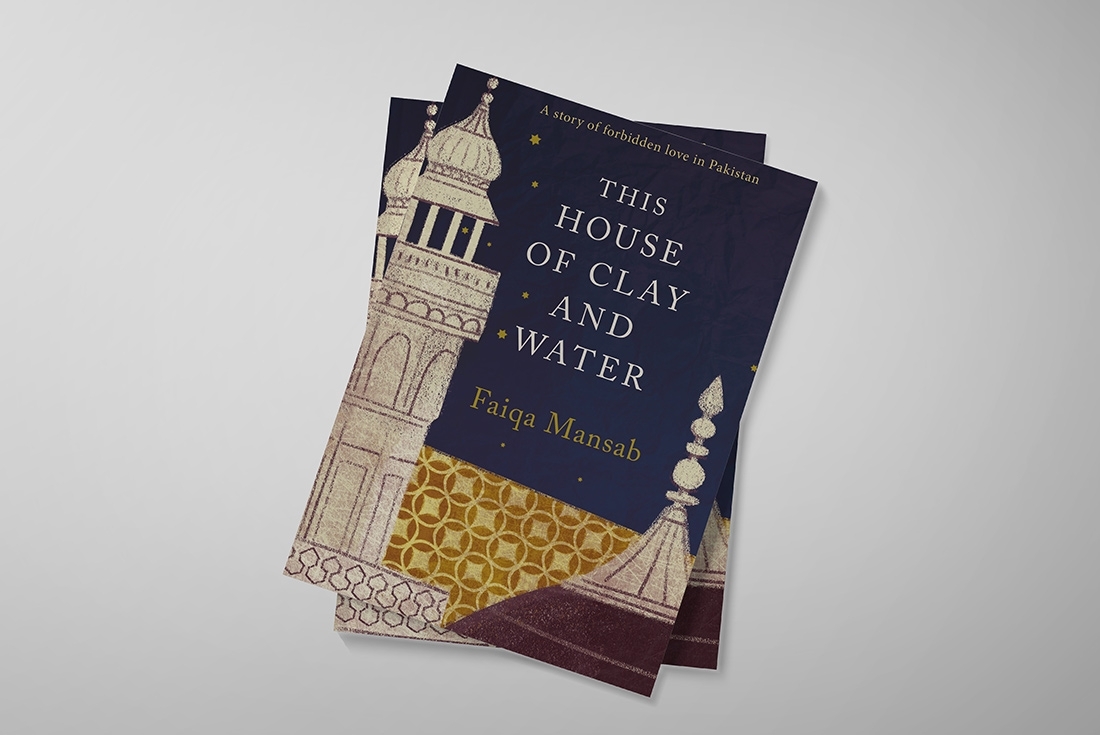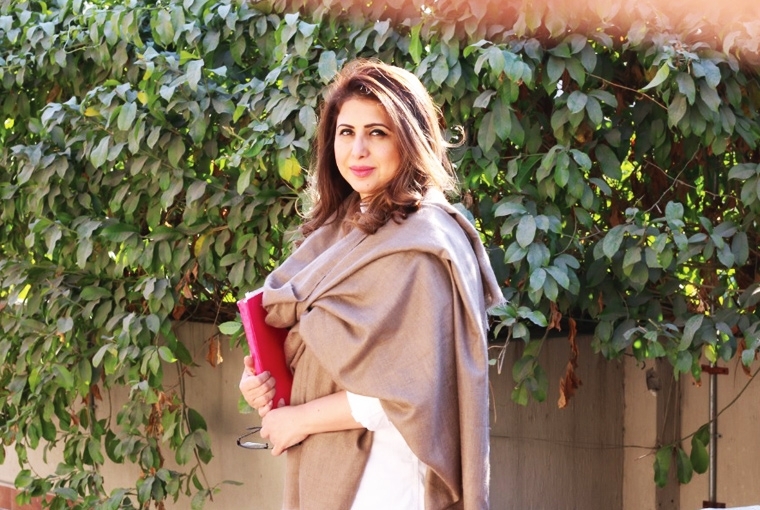

Faiqa Mansab writes because it makes a difference in others lives, because words made a difference in her life. She writes because she doesn’t know how to not write. As an avid reader, she feels that books help one know their true self and they make you feel at home, wherever and whenever. Her debut novel, This House of Clay and Water, did just that. She went back to her roots, Lahore - her canvas as she says, to narrate a beautiful but delicate story of two very complex girls, Nida and Sasha. She tells us all.
Tell me a little about yourself and how you became a novelist.
I write because when I was a child, other people’s writing—their books—made a difference in my life. We don’t often acknowledge this but books do make a difference and it could be for any number of reasons. Books are our sanctuaries; especially if you’re different, or lonely, or people don’t understand you or all of the above. Books help us find ourselves and they help us feel like we belong. We often think that reading and writing is a lonely pursuit but it’s actually a communal activity. A writer wants her stories to be read, to be heard because those stories are what matter to her. A story is an articulation of what that writer thinks, feels and cares about. That doesn’t mean that a character is the mouthpiece of the author, not at all. Nor does it mean that a narrator is the author. What it does mean, is that through techniques of false narrators, unreliable narrators, characters and narratives, the writer is representing a milieu to the reader to examine, to evaluate and to gain from; what the reader gleans is entirely up to them. Their own experiences, intelligence and multifarious factors that make an individual who they are will help them interpret the story as they will. Not every person will read the same story in the same way. That’s the beauty of stories.
What inspired your book, This House of Clay and Water?
This House of Clay and Water is about a hijra, a woman and a child. It’s about the tragedy of human life, and how fate and free will are inextricably intertwined and circumscribed. I’ve written this novel in first person and third person with limited points of view because I wanted to show the character’s vision and thought as it took shape, rather than after it had been rationalized by them. I wanted the reader to hear the character’s argue with themselves as they justified their feelings and experiences; to show that self-deception is an inherent part of survival. I wanted to have characters who were highly aware. Their vision didn’t have to be accurate and yes, they made mistakes but then that is what a human story is about, making mistakes, making choices. Sometimes not making a choice is also a choice and the law of consequence will always prevail. These characters are ridden with furies. Their memories, love and suffering haunt them. This story arises out of the conflict between the individual and society which assumes the power to control and dictate individuality.
“Books are our sanctuaries; especially if you’re different, or lonely, or people don’t understand you or all of the above. Books help us find ourselves and they help us feel like we belong”
What lies at the core?
For me, it is the struggle of the individual against organized social structures: religion, gender, class. For me, the story is about struggle against power constructs like patriarchy and all the other traditional and orthodox constructs of power like marriage, schooling and organized religion. But every reader will read this story differently and it might be something else for them. Another important theme is the non-male body and individual. Women in patriarchal societies are pushed into erasure. They have to deny individuality, and the best way to do that is by forcing women into motherhood. Once a woman is a mother she becomes Every Woman. Social psyche is so overwhelmingly worshipping of a mother that any woman who isn’t one, is automatically a monster. This same sentiment is translated into homophobia, and towards any individual who is unsure of their gender identity or chooses one that society feels is the ‘wrong’ one. You’re either a man or a mother. If not either you are oppressed. Not that mothers are completely free and equal to men. Not at all, but there is some semblance of power if you’re a mother. Such individuals, who defy gender, hijras, transgenders, LGBTQ people are oppressed, ostracized and victimized as an organized movement by society. In order to belong, individuals gather together against such ‘miscreants’ who are different and therefore a threat. This idea of the male at the centre of the universe is old and evil.
Nida and Sasha have complex characteristics. Can you tell me more about them?
Nida thinks she is self-aware but Sasha has insights into Nida’s character that tell us more about her and who she really is than we do listening to her first-person account of her life. Nida is judgmental about Sasha. She thinks of herself as a woman who is free of patriarchal prisons but she isn’t really. Self-deception is an important theme in this novel. Sasha is not a ‘fallen woman’ as some people have interpreted her. She is the strongest of them all in my opinion. She understands power and negotiates with it better than Nida and even the men. She transforms herself as she needs to because she needs to be in a position of power. She uses the social parameters given to her to her own ends. I don’t know if readers will see that but that is how I see Sasha.
“Social psyche is so overwhelmingly worshipping of a mother that any woman who isn’t one, is automatically a monster.”
Can you give me a blurb on This House of Clay and Water?
Set in Lahore, This House of Clay and Water explores the lives of two women. Nida, intelligent and lonely, has married into an affluent political family and is desperately searching for some meaning in her existence; and impulsive, lovely Sasha, from the ordinary middle-class, whose longing for designer labels and upmarket places is so frantic that she willingly consorts with rich men who can provide them. Nida and Sasha meet at the famous Daata Sahib dargah and connect their need to understand why their worlds feel so alien and empty, bringing them together. On her frequent visits to the dargah, Nida meets the gentle, flute-playing hijra Bhanggi, who sits under a bargadh tree and yearns for acceptance and affection, but is invariably shunned. A friendship fragile, tentative and tender develops between the two, both exiles within their own lives; but it flies in the face of all convention and cannot be allowed.
The novel talks about lives and friendship with a Lahore backdrop. Any particular reason to choose this theme?
Lahore is my canvas. I love this city and its complexities and flavours. It’s such a rich and thriving city, pulsating with untold stories. The sides of Lahore I write about are somehow not as well known in literature. I write about Sufi Lahore, the old walled city of Lahore where the marginalized and the dispossessed live. They aren’t all unhappy and sad people. They have joyous lives as well. They might be limited but they aren’t necessarily unhappy. We often make the mistake of projecting and thinking that because we would be unhappy living like this everyone will. That’s not true at all. I write about the peripheries of polite society. I wanted to write about this multi-faceted city and its tales of women, hijras, prostitutes and Dargahs. The Sufis of Lahore embrace everyone. There is no discrimination in the Dargahs.
What are you working on next?
I am writing my next novel but I don’t like to talk about my stories when they’re still in the process. I can tell you though that I am thoroughly enjoying writing it. I’m almost half way.

Text Suhani Lakhotia